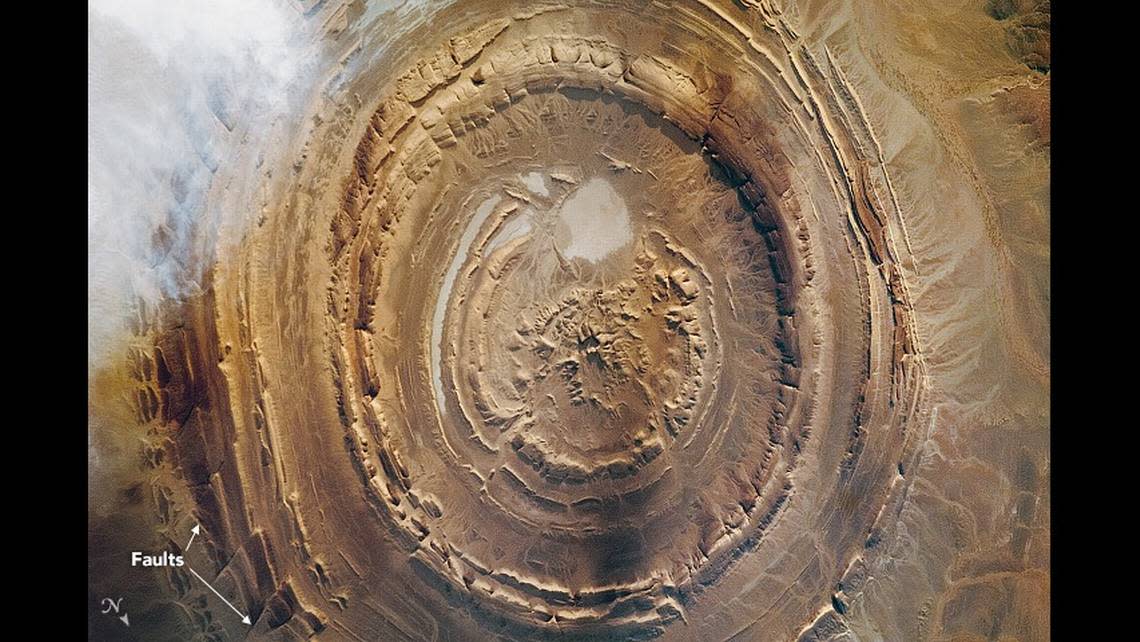Origin of surreal ‘Eye of the Sahara’ debated — yet again — after NASA shares photo
NASA’s Goddard Space Flight Center decided to kick a hornet’s nest July 16 when it shared an image of one of Earth’s most debated oddities.
Known as the Richat Structure, the formation is a series of concentric circles that look exactly like a big, round UFO landing pad.
“Dubbed ‘the Eye of Sahara’ for its rings, the diameter of the structure spans about 25 miles,” the Goddard Space Flight Center wrote.
“Despite its appearance, which resembles that of a meteor impact, geologic studies indicate the distinctive structure is the result of an uplifted geologic dome.”

Perhaps it’s coincidental the photo was shared amid the international hubbub over the groundbreaking first images from the James Webb Space Telescope.
Then again, maybe the flight center just felt a little left out.
Either way, if you want to start an argument on social media, cite “official” data reporting those perfect looking circles in northwest Africa are “due to various rock types eroding at different rates.”
Sure enough, the photo has gotten more than 2,800 reactions and comments as of July 19, including from some who assumed it was extraterrestrial in origin. Others cited a popular theory that it’s the “blast site of a huge explosion” that reduced a mysterious civilization to the sand and rock.
“Some think this might be the lost city of Atlantis,” Scott D. Taylor wrote on Facebook.
“They spot a huge UFO and photograph it. But this is the smoke screen explanation,” Edward Solis posted.
“Looks like a crash landing,” Wes Plank said.
Even NASA admits “the reason for the high degree of circularity is not clear.”
Adding to the site’s mystique is the fact it’s in a part of Mauritania that is so dry, it’s nearly unlivable, according to Earth Observatory.
“Approximately 3.7 million people live in Mauritania, though much of the population lives along its Atlantic coastline, about 500 kilometers (300 miles) from the Richat Structure,” the observatory says.
NASA team created to study weird objects floating in sky, but don’t call them UFOs
Human trash discovered on Mars — but NASA’s explanation leaves unanswered questions
NASA discovers mysterious balanced rock on Mars, igniting debate over how it happened
